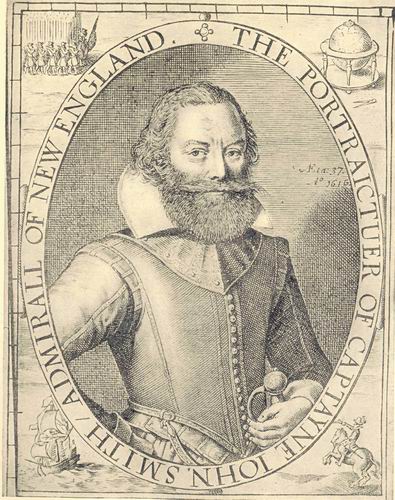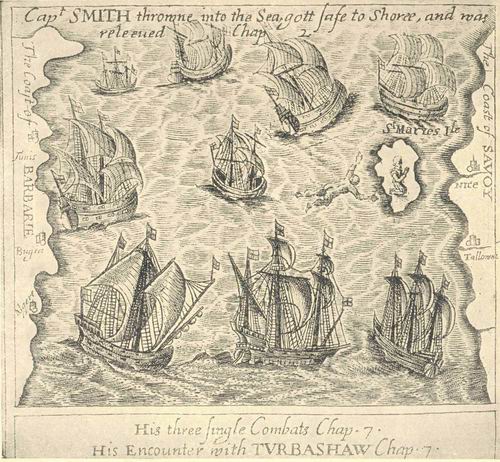|
1999-2003 (Return to Web Text-ures) |
Click Here to return to |
|
1999-2003 (Return to Web Text-ures) |
Click Here to return to |
NEW ENGLAND FIRST NAMED
Captain John Smith, “Admiral of New England,” gave us the name of New England. With four London merchants he left England in March, 1614, on a trading expedition, sailing for North Virginia, as North America was then called. He landed near the Penobscot River and mentions the “Tarrantine” Indians who lived on the east side of this river. As he expressed it, “I chanced to arrive at Monahigan, an Ile of America . . . to take whales, for which we had one Samuel Crampton and divers others expert in that faculty… We found this whale fishing a costly conclusion. We saw many…but could not kill any.” Captain Smith therefore in a small boat sailed westward along the coast with a few of his men, noting carefully the promontories, rivers and harbours, drawing, as he expressed it, “a map from point to point, isle to isle, and harbour to harbour, with the soundings, sands, rocks and landmarks.” The little expedition sailed around Cape Ann,—which he called Cape Tragabigsanda, after a Turkish flame of his who rescued him from slavery in Turkey,— finally landing somewhere near Cohasset. How near he actually came to Boston Harbour will never be known, but it is quite certain that he sailed across Massachusetts Bay. He wrote afterwards that “the fairest reach in this bay was a river, whereupon I called it Charles River.” His map shows this river, which was undoubtedly the channel between Long Island and Deer Island. He then sailed across the Bay, made a sketch of Cape Cod, rejoined his vessels, and set sail for England. His name however will be remembered by us owing to the fact that he called this land New England for the first time. His map, although drawn six years before Plymouth was settled, and sixteen years before Boston, nevertheless mentions both names on it, his Boston being near Portsmouth, Hull being Hampton, Bristow then being called Boston. Other names given to various places were Cambridge, Sandwich, Dartmouth, Ipswich, Barnstable, London, Oxford. In one corner of this map is a portrait of “Captayne” John Smith, described as being thirty-five years of age.


A CORNER OF JOHN SMITH’S MAP, SHOWING A SHIP OF THAT TIME
He was very enthusiastic about the new land and described it in these words: “Of all the parts of the world I have yet seen not inhabited, I would rather live here than anywhere.” And again he writes, “And then the countrie of the Massachusits which is the paradise of all those ports.”
Just before Winthrop sailed, John Smith wrote in his records, “Yet further for my paines to discredit me and my calling it New England, they obscured it and shadowed it with the title of Cannada, till, at my humble suit, King Charles confirmed it, with my map and books, by the title of New England.” Captain Smith again set sail from England in 1615, but his ship never reached America. On this second attempt he was captured by a French cruiser, and it was during his captivity that he wrote the narrative of his first voyage to New England. It was published in London in 1616, entitled “A description of New England: on the observations, and discoveries of Captain John Smith (Admirall of that Country) in the North of America in the year of our Lord, 1614.” About three thousand of these pamphlets were distributed by him in order to encourage a movement towards colonization, but his efforts did not meet with much immediate success. It must not be forgotten however that his expedition was undoubtedly a contributing factor in establishing the English race upon Massachusetts Bay.